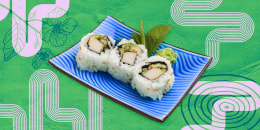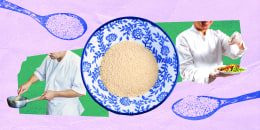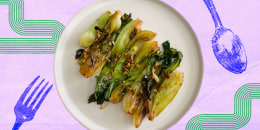Almost 10 years ago, a friend asked Jasmine Cho if she could create cookies with her face on it. Cho agreed and when she noticed “a buzz” around the cookies, she wondered if she could use her baking for another purpose.
“There was this persistent feeling of not belonging, of irrelevance and a lot of that is very much aggravated for me due to the fact that I don’t have much remembrance of studying Asian Americans in particular,” Cho, 40, owner of Butter and Joy in Pittsburgh, tells TODAY.com. “I had this pain point that I’ve grown up with all my life and so that was just a moment where it clicked and I said, ‘Oh well if people are paying attention to these face cookies, whose faces do I actually want them to be paying attention to?’”
Cho began making portrait cookies of notable Asian Americans and Pacific Islanders, She calls herself a “cookie activist.”
“I realized I could start portraying, with intention, historical figures that were Asian American, Pacific Islander, who had been excluded from history curriculum,” she says.
From a hobby to activism
Cho grew up in Los Angeles where her parents settled after they immigrated from South Korea. Throughout her childhood, she often joined her father, taekwondo Grandmaster Hee Il Cho, learning and practicing the martial art. When Cho was a sophomore in high school, she began baking with her best friend and her mom and soon Cho was smitten.
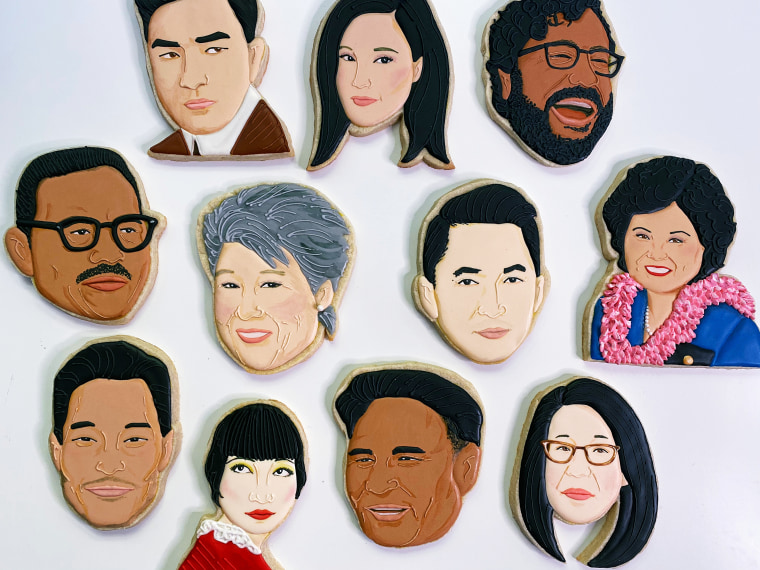
“It was amazing because all these disparate ingredients that are inedible on their own came together to create not just something that was beautiful but was so delicious,” she says. “I fell in love with the alchemy and magic of baking.” While Cho dreamed “of having my own bakery café,” she didn’t pursue baking as a career until 2010. She made YouTube videos of her baking, decorating and “even animating cookies” and submitted them to local bakeries to try to get a job as a baker. It worked. Several bakeries offered to hire her, and she worked in one for about three years.
“This was definitely more than a hobby,” Cho says. “A few years would pass until I had the opportunity to go full time and launch my own online bakery.”
The bakery, now called Butter and Joy, started in 2015. A few months after starting her business, she created the portrait cookie for her friend and started thinking about creating portraits of important Asian American and Pacific Islanders. Her first portraits included well-known Asian American and Pacific Islander Pittsburghers, such as former Pittsburgh Steeler Heinz Ward, Dr. Freddie, an orthopedic surgeon, and Star Wars actor Ming Na-Wen, who grew up in Pittsburgh.
When people see the cookies, they do “a double take,” Cho says.
“They’ll see the art first and then they’ll be like, ‘Wait, that’s a cookie?’” she says. “That pause has become very powerful as far as the art that I’m making, and it’s become my motivation. I really want to encourage people to pause, to think about what they’re looking at and then to start digesting their story a little bit more.”
Cho began sharing her portrait cookies on social media, including historical information in the caption, but she’s also had cookies displayed. When the Smithsonian National Portrait Gallery hosted an exhibit at the Heinz History Center in Pittsburgh, Cho’s cookie portraits were displayed, too. The Center for Asian American Media has become a big supporter of Cho’s and commissioned her to make several cookie portraits of people featured in a PBS documentary series called “Asian Americans.”
In some cases, such as with her portrait of Sammy Lee, a Korean American diver, she includes newspaper articles as part of the cookie art.
“He was actually the first Asian American Gold medalist for the US,” she says. “He was a military doctor and he was so accomplished.”
Yet despite his accolades, he was “also a victim of redlining,” she says.
“The cookie is put up against the actual news article from the time of how he was barred from buying property in Garden Grove, California, due to discrimination,” Cho explains.
Lately, Cho has started working with the Pennsylvania chapter of Make Us Visible, which “advocates for Asian American Pacific Islander histories to be included as part of K through 12 curriculum.”
“I’m planning to create a sort of mini portrait gallery specifically from figures from my children’s book, ‘Role Models Who Look Like Me,’” she says. “It (has) watercolor illustrations that I did.”
'Making history right now'
When Cho hears about a famous Asian American or Pacific Islander she had not heard of before that often encourages her to make them into a portrait cookie.
“I’ll emotionally react to every news story I learn about an Asian American because it is new and I didn’t learn about it when I was a kid,” she says. “I’m inspired by current Asian Americans who are making history right now.”
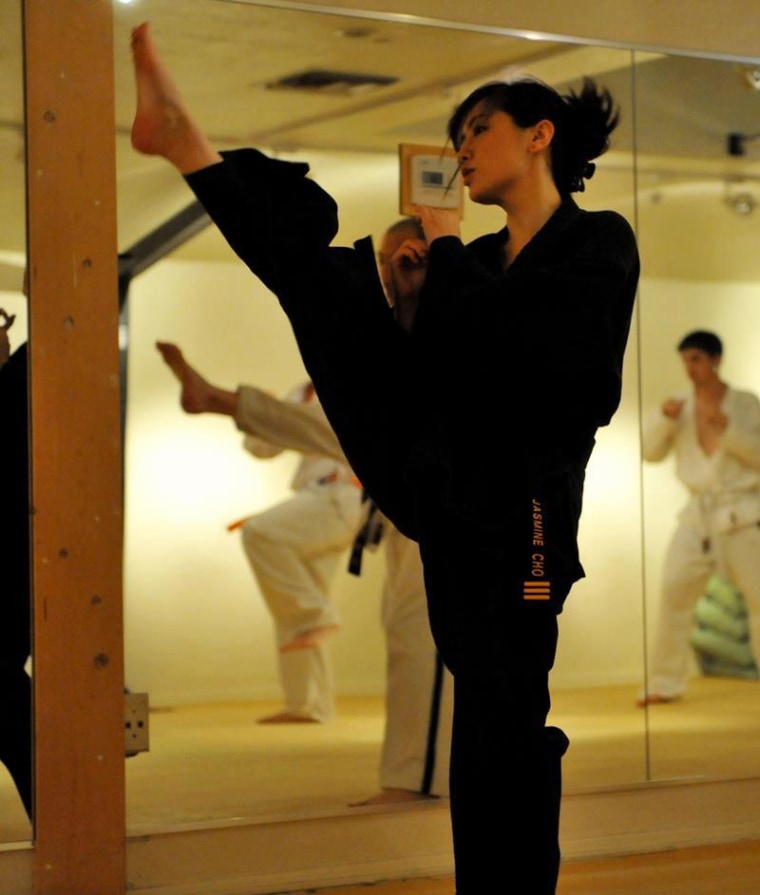
While Cho recalls much about September 11, she never remembers hearing about any “non-white heroes” from that day. Upon learning about Betty Ong, she felt inspired to make a cookie portrait.
“Betty Ong was a Chinese American flight attendant who was aboard one of the planes that crashed into the North Towner of the World Trade Center on September 11,” she says. “She was actually the person who made the call that led to all the domestic flights being rounded that day and potentially saved hundred of other lives.”
Ong’s niece saw the cookie and reached out to thank Cho.
“Those moments when I hear from relatives of people who I portray are really meaningful to me,” she says. “It’s also fun when celebrities respond. I’ll also never forget when Daniel Dae Kim took the time to make this whole video unboxing the cookies that he received from me and held up his face cookie next to his.”
The process
The recipe for the portrait cookies has remained the same, for the most part — a vanilla sugar cookie.
“I use that and tweak it to make other flavors,” she says. “I haven’t played with flavors as much recently.”
Making a portrait cookie takes anywhere from four to six hours over two days. After baking the cookies, she paints a base coat on it and lets it rest overnight. The next day, she’ll paint all the details of the face to bring the portraits to life.
“I can go back and trace every single facial feature and then I’ll ice on the details," she says. “I’ll use like an edible luster dust to brighten (it), put blush on the cheeks.”
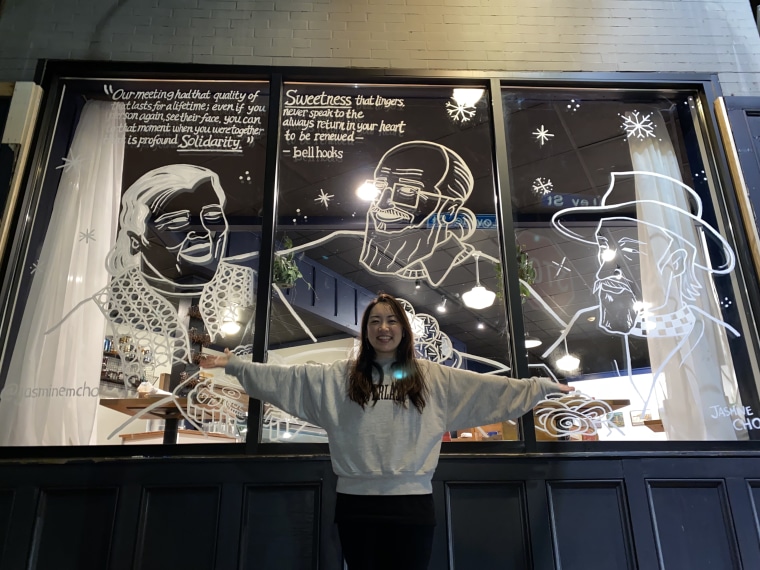
When she first started baking portrait cookies, Cho made a sketch of the person that served as a template to hand cut and decorate each one. She used to cut out each piece, such as eyebrows, to create it. Now she uses a projector where she can “project that image and now trace it.” For larger orders, she uses custom 3D cookie cutters. While the cookies take time, she enjoys that aspect.
“It’s a very slow process,” Cho says. “That’s actually related to the meaningfulness of my work because it lends itself to becoming very meditative.”
'My dad's so cool'
While Cho originally studied pharmacy in college, she took a break. Recently she returned to school and received a bachelor’s degree in art therapy.
“That was a very poignant moment for me because at age 35 I became a first-generation graduate and graduated summa cum laude and so I was the chosen valedictorian to give a speech,” she says. “(This) would have been such an amazing moment for my family and but that is exactly when the lockdown happened.”
Following her undergrad degree, she earned a masters as well. For now, Cho plans to spend time exploring her family history. Her dad, who is 83, is “credited as one of the pioneers who helped introduce (taekwondo) to the Western world.” She recalls traveling in Europe with him and seeing the almost boy-band level crowds who came to see him. Even today, he still works.
“He still teaches six days a week,” she says. “He’s really a remarkable figure.”
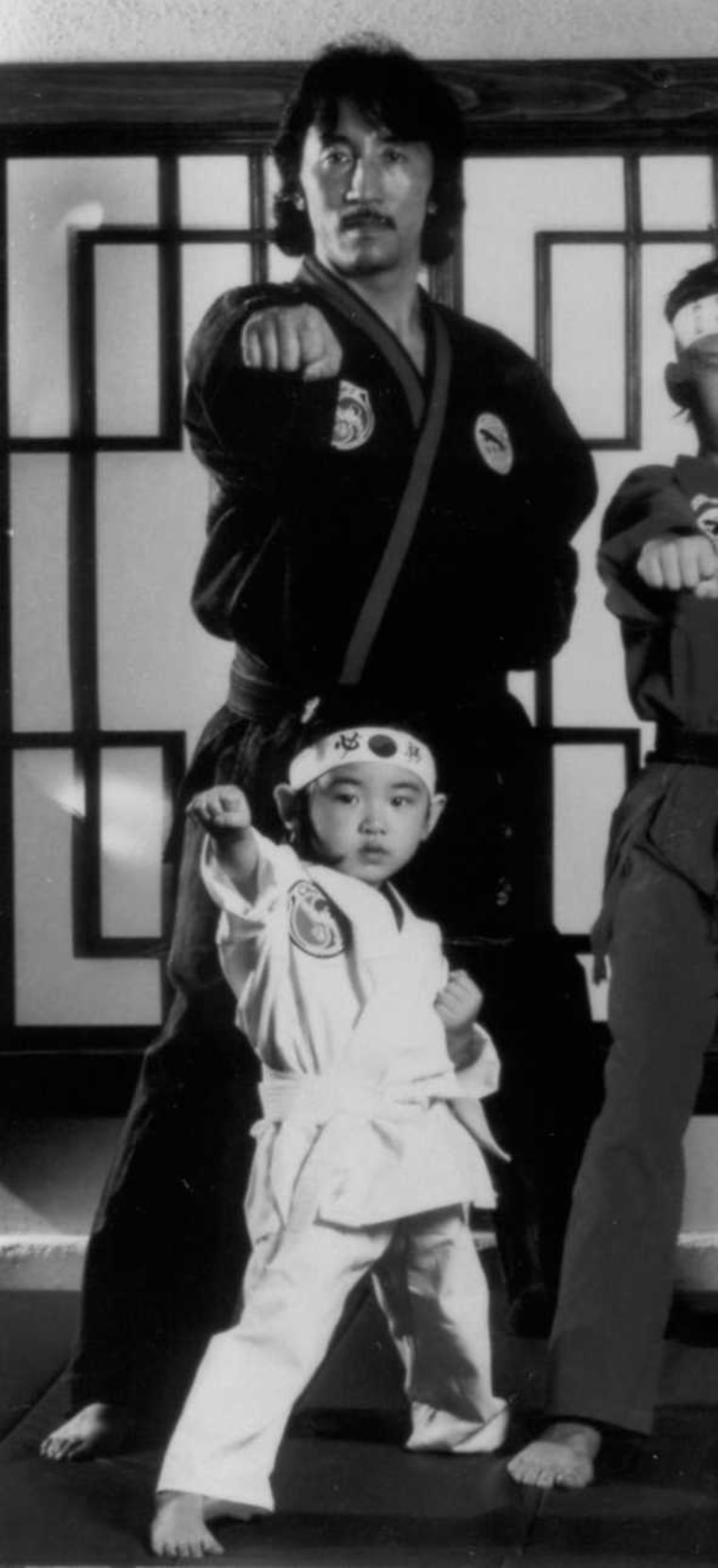
Though, she knew he was awesome from the start. When her grade school had show and tell, she often brought videos of her dad breaking bricks and wooden boards.
“As a child I didn’t necessarily realize his historical impact. It was just like, ‘Oh my dad’s so cool. He can beat up Bruce Lee,” Cho says, laughing.
As she aged, she realized how important he was. Cho’s still uncovering everything her father has faced, much like the research she does when she features someone as a cookie portrait.
“Even now I’m still like really learning how much of an impact he’s made within our culture,” Cho says. “I’m hoping I can be a little more intentional scheduling conversations with him to hopefully start collecting a bit of research and share his story.”


